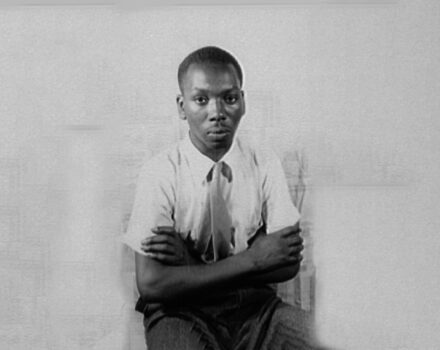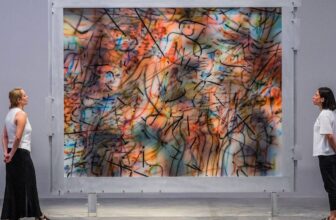What Was Jacob Lawrence Known For
In the heart of Harlem, where jazz once echoed through the streets and voices of cultural revolutionaries rose from corners and cafés, a young boy found his voice, not through words, but through paint. That boy was Jacob Lawrence, who would grow into one of the most influential American painters of the 20th century. His work told the stories that textbooks left out. His colors captured the rhythm of migration, struggle, and triumph. And his brushwork carried the urgency of truth.
Jacob Lawrence (1917–2000) was known for his powerful visual storytelling that brought African American history, culture, and experience to the forefront of American art. Unlike the abstractionists of his time, Lawrence’s paintings were narrative and deeply human, weaving tales of heroes, everyday laborers, migrants, and visionaries.
He gained widespread acclaim in the 1940s with his seminal work “The Migration Series”, a collection of 60 panels chronicling the mass exodus of African Americans from the rural South to the urban North in the early 20th century. This body of work was groundbreaking, not only because of its subject matter but because it was one of the first times a major American museum recognized a Black artist’s depiction of Black life as an essential part of American history.
Jacob Lawrence was known not just as a painter, but as a historian, educator, and chronicler of the African American experience. His vivid panels preserved history in a time when few others were paying attention.
How Did Jacob Lawrence Make His Artwork?
Lawrence’s approach to art was meticulous and structured, qualities that paralleled the discipline of the people he portrayed. Unlike many artists who complete one canvas at a time, Lawrence would often conceive entire series before ever picking up his brush. He planned, researched, and wrote captions or narratives for each piece.
For major projects like “The Migration Series,” he first drafted all 60 captions and then laid out the visuals, ensuring that each panel would build upon the last like a novel. Only after conceptualizing the entire story did he begin painting. He worked on all the panels simultaneously, applying one color to each canvas before moving on to the next. This ensured that the entire series maintained a consistent tone and palette, visually and emotionally.
Lawrence saw himself not as a protest artist, but as a reporter of the African American experience. His style was figurative and direct, stripped of extraneous detail, focusing instead on form, movement, and meaning.
What Materials Did Jacob Lawrence Use?
Jacob Lawrence primarily worked with tempera paint on hardboard or paper, a medium he loved for its flat, matte finish and quick-drying properties. Tempera allowed him to create bold, flat areas of color with clear lines, ideal for his narrative, poster-like style. He frequently used Masonite panels for his larger series, which provided durability and consistency across multiple paintings.
Lawrence didn’t rely on elaborate materials; instead, he allowed his compositions, color schemes, and themes to take center stage. His minimal use of material resources was intentional, it reflected the resourcefulness and spirit of the communities he depicted.
The Art Style of Jacob Lawrence: Social Realism Meets Modernism
Lawrence’s work defied easy categorization. While most critics associate him with Social Realism, he blended it seamlessly with elements of Cubism and Modernism. His paintings featured flattened perspectives, angular lines, and vibrant hues. His figures were stylized but expressive, often shown in motion, walking, climbing, working, escaping.
At the core, his art was narrative expressionism, a style that communicated emotion and message rather than realism. The simplicity of his figures and backgrounds was deliberate, it forced the viewer to focus on the story and the emotion conveyed.
Many scholars also place Lawrence within the tradition of Harlem Renaissance artists, though he emerged at the tail-end of the movement. His work was directly influenced by artists like Charles Alston and Augusta Savage, who mentored him at the Harlem Art Workshop and the WPA (Works Progress Administration) Federal Art Project.
How Many Artworks Did Jacob Lawrence Create?
Throughout his prolific career, Jacob Lawrence created over 1,000 pieces of art, including paintings, drawings, prints, and illustrated books. His most notable works are part of multi-panel series, each exploring a different chapter of African American history or personal and historical narratives.
Some of his best-known series include:
The Migration Series (1940–41)
The Life of Toussaint L’Ouverture (1937–38)
The Life of Frederick Douglass (1938–39)
The Life of Harriet Tubman (1939–40)
The Life of John Brown (1941)
War Series (1946–47)
Struggle: From the History of the American People (1954–56)
Each of these works carried the pulse of a people, each brushstroke a line in an untold story.
What Are Jacob Lawrence’s Most Famous Artworks?
While Lawrence produced many impactful pieces, several stand out for their cultural and historical significance:
1. The Migration Series (1940–1941)
Perhaps Lawrence’s magnum opus, this 60-panel collection documents the journey of African Americans during the Great Migration. It is split between the Museum of Modern Art (MoMA) and the Phillips Collection in Washington, D.C., and is revered for its blend of modernist technique and historical narrative.
2. The Life of Toussaint L’Ouverture (1937–38)
Created when Lawrence was just 20 years old, this 41-panel series depicts the life of the Haitian revolutionary who led the only successful slave revolt in the Western Hemisphere. It was one of the first artworks to bring Black international heroes into the American cultural conversation.
3. Struggle: From the History of the American People (1954–56)
This ambitious project was intended to consist of 60 panels (though only 30 were completed), portraying a diverse vision of American history, including Native American and Black resistance. After being dispersed for decades, the panels were reunited for the first time in 2020 at the Peabody Essex Museum, reigniting public interest in Lawrence’s vision of a shared American past.
4. Builders Series (1968–2000)
Late in his life, Lawrence began painting images of builders, carpenters, architects, and laborers, as a metaphor for community, collaboration, and progress. These works are deeply optimistic, representing a culmination of his themes of unity and uplift.
How Much Does Jacob Lawrence Art Cost?
The market for Jacob Lawrence’s artwork has seen a dramatic rise, particularly in recent decades as institutions and collectors have grown to appreciate his significance in both art and history. The cost of his works varies based on the piece’s size, medium, and provenance.
Original paintings: Major pieces can command millions of dollars. In 2023, one of his works, “Builders, The Family” (1974), sold at auction for $2.7 million, setting a new record.
Series panels: Panels from historic series like “Struggle” or “Migration,” if ever available, could easily exceed $1 million per piece, though most are held by museums and unlikely to hit the open market.
Prints and lithographs: Limited edition prints can range from $5,000 to $50,000, depending on the rarity and condition.
Collectors not only see Lawrence’s work as a cultural artifact but also as an investment in American heritage. With the current push to diversify museum collections and elevate Black voices, Lawrence’s work has become increasingly sought after.
Lawrence’s Enduring Legacy: More Than Paint
Jacob Lawrence’s influence extended far beyond the art world. He was a professor at the University of Washington for over 15 years, mentoring a generation of young artists and thinkers. He was also the first African American artist represented by a major New York gallery (Downtown Gallery), breaking racial barriers in the art industry.
His style, vision, and integrity have influenced artists across generations, including Kara Walker, Kehinde Wiley, Kerry James Marshall, and many others. Lawrence showed that storytelling through art could change the way a nation sees itself.
Even today, his voice reverberates in exhibits and classrooms across the country. In 2020, a previously lost panel from the “Struggle” series was rediscovered at a New York auction, a reminder that history, like Lawrence’s work, is still unfolding.
Why Jacob Lawrence Matters Now More Than Ever
In today’s fractured world, the clarity and compassion of Jacob Lawrence’s work feel more urgent than ever. His stories remind us that history is not just written in books, it’s painted on walls, told around dinner tables, marched through streets, and sung in protest songs.
He believed that everyone’s story deserved to be seen, and he gave visibility to people who were often excluded from the American narrative. His paintings invite us to look, to feel, and to remember. In doing so, they demand that we see ourselves in others, and others in ourselves.
Jacob Lawrence did not just paint history, he painted humanity. And in doing so, he made sure the stories of courage, migration, struggle, and triumph were not forgotten, but immortalized in color.




